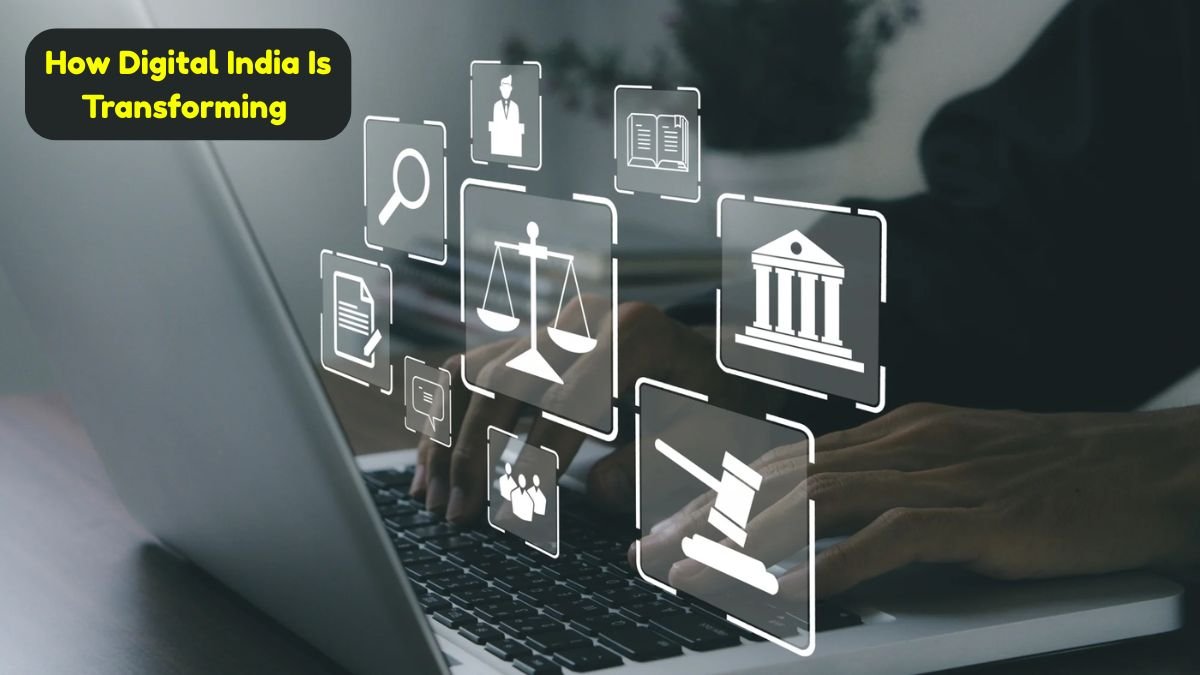On 1st July 2015, the Hon’ble Prime Minister of India, Shri Narendra Modi Ji launched the ‘Digital India’ program. Its objective was to transform India into a digitally empowered society and knowledge-based economy. Today, almost a decade later, this campaign is not only bringing positive change in the lives of people, but is also giving India a strong place on the global digital platform.
Vision and Objectives of Digital India
The basic idea of Digital India is to make government services easily available to every citizen in digital form, no matter in which area or village he lives. Its main goal was to increase digital access, promote digital literacy and create an India where technology is equally accessible to all.
Key Pillars of Digital India
The Digital India campaign is working in many important areas, which mainly include:
- Development of Broadband Highways – To provide fast internet connectivity to every corner of the country.
- Universal access to mobile connectivity – To provide mobile and internet facilities to every citizen.
- Public Internet Access Program – To bring e-services to villages through Common Service Centers.
- E-Governance – To make government processes simple and transparent.
- Digital Literacy – To teach people the right use of technology.
Major achievements of Digital India
Digital India has crossed many milestones in the past years. Innovations like Aadhaar, DigiLocker, Bhim App, UMANG, CoWIN portal, e-RUPI, and UPI in monetary transactions have made technology a part of the life of the common citizen in India.
- Digital payments have reached villages today. Even small traders and street vendors are now accepting payments through QR code.
- DigiLocker has eliminated the need for physical copies of documents.
- Portals like e-Hospital have facilitated online registration and appointments in government hospitals.
Digital Economy Report 2024: India ranks third
According to the State of India’s Digital Economy Report 2024 released by the Indian Council for Research on International Economic Relations (ICRIER), India has reached the third position in the world in the field of digital economy. This is a huge achievement and the credit goes to the strong digital infrastructure of the country.
The major factors behind this ranking are:
- Widespread internet connectivity
- Digitization of government schemes
- Reach of digital services to rural areas
- Technological understanding and adoption intensity of citizens
Role of Digital India towards Vikas Bharat 2047
The government aims to make India a developed nation by 2047 – which has been called the dream of ‘Vikas Bharat’. In this direction, Digital India is playing a central role:
- Use of digital resources in education and skill development
- Making social welfare schemes transparent through digital means
- Establishing leadership in areas such as innovation, artificial intelligence, space technology
- Developing next-generation technologies such as cloud computing, quantum technology, blockchain in India
Promoting entrepreneurship and startups
Under Digital India, the government has promoted initiatives such as Startup India, Make in India, and innovation hubs. This is leading to an innovation-based economy emerging in the country where youth are commercializing their ideas with the help of technology.
The government is working with startups, academic institutions and industry experts to develop digital solutions that can address problems in health, agriculture, environment, education and urban life.
Data-based decisions and role of AI
The Government of India is now providing better and personalized services to the citizens using data and artificial intelligence. This has increased the monitoring, impact and execution capacity of the schemes manifold.
For example:
- Aadhaar and digital ration cards brought transparency in ration distribution
- CoWIN platform made vaccination management easy and efficient
- e-NAM provided farmers with fair prices for their crops and a wider market
Future direction: Digital citizen empowerment
The next phase of Digital India will be digital empowerment of every citizen, which includes:
- Internet and Wi-Fi facility in every village
- Digital health card and telemedicine services
- Digital education resources for every student
Online availability of all schemes
India has now not only become a part of the technological revolution, but it is also moving towards leading it. Today, through Digital India, every citizen has his rights and facilities available on the mobile screen itself.
Conclusion
Digital India is not a dream, but a symbol of India’s collective digital consciousness. It is not just the use of technology, but a mission to make people’s lives easy, safe and prosperous. This campaign has proved that when government policy and public participation meet, revolutionary changes are possible. In the years to come, Digital India will not only accelerate the country’s economy but will also strengthen the foundation of an equal and inclusive society.
